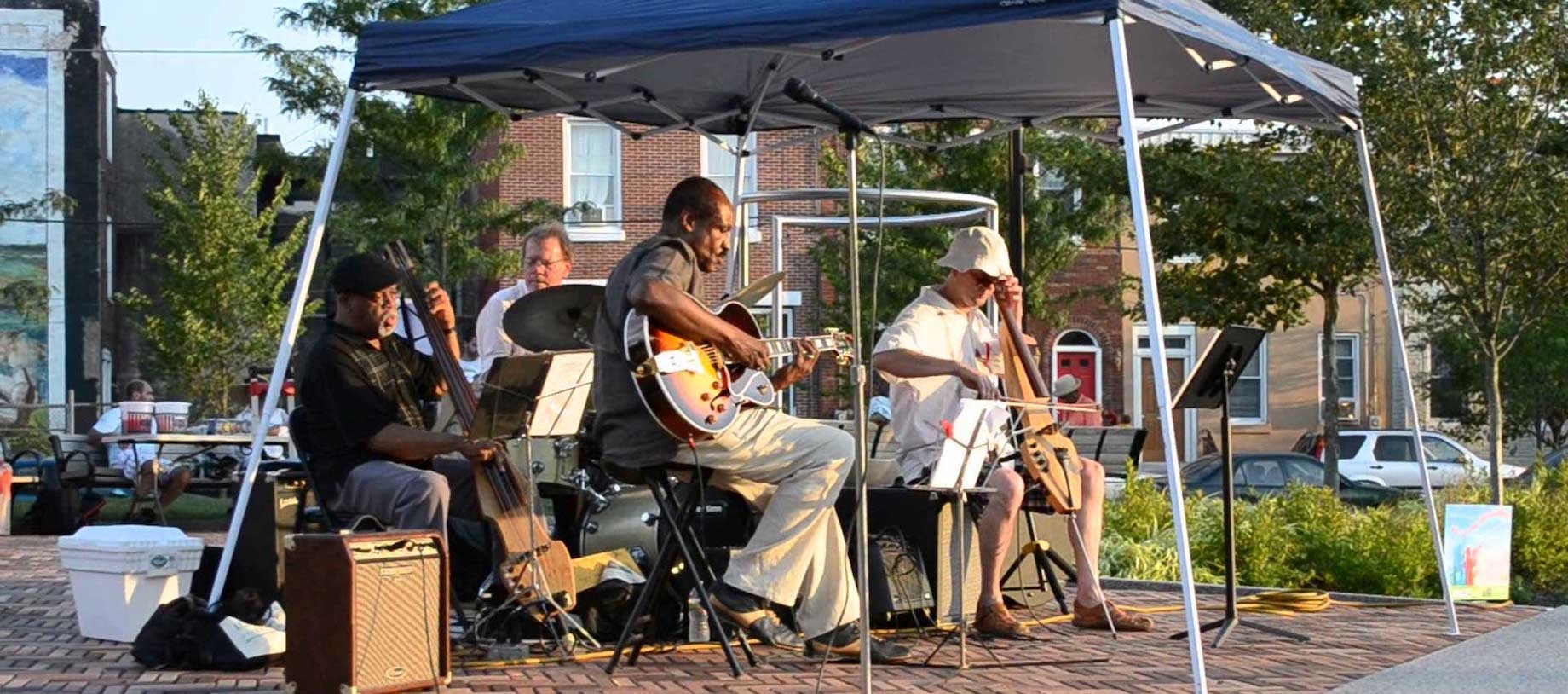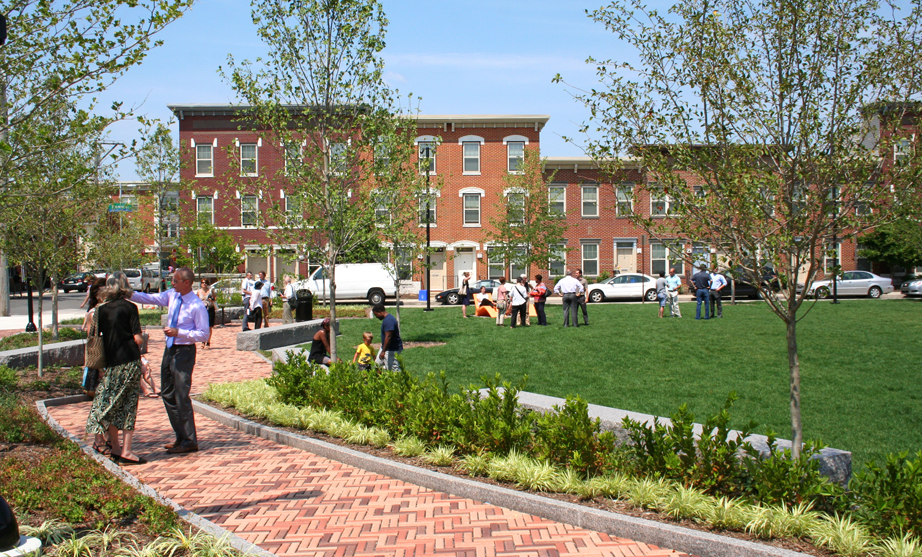
Public housing at the heart of neighborhood revival
The Hawthorne neighborhood in Philadelphia has come back to life—catalyzed by Martin Luther King Plaza, the redevelopment of a former high-rise public housing project.
Philadelphia Inquirer architecture critic Inga Saffron remembers Hawthorne as a "notorious, crime-ridden area," that is today a completely different place. Like many neighborhoods adjacent to Center City, the area now struggles with gentrification. Yet about 250 homes surrounding a new park at the heart of the neighborhood are permanent public housing, reserved for low-income residents. These residents occupy the most desirable part of Hawthorne, which is an achievement.
Torti Gallas + Partners designed the brick rowhouses and the neighborhood plan. LRSLA Studio, landscape architects, detailed the new park that is one of the more active neighborhood greens around Center City, with events like regular live jazz music. But the green also serves more quotidian purposes, like a lawn for impromptu sports and a play area for children.
The federal HOPE VI program, Community Development Block Grants, and equity investment provided the financing. Martin Luther King Plaza is an example of the transformative impact of HOPE VI.

A looming presence in Hawthorne in the last half of the 20th Century, four towers of the former Martin Luther King Plaza were imploded in October of 1999. A resident for 40 years told the paper about seeing blue drug packets scattered on the ground everywhere. The towers stood out as public housing, while the newer 2- and 3-story townhouses are impossible to identify as such based on their appearance.
The “superblock” that held the towers has been segmented into smaller blocks, typical of South Philadelphia, with narrow streets and on-street parking. A small park, reminiscent of many historic Philadelphia squares, was carved out of the development. Dedicated in 2012, Hawthorne Park is the venue for a popular "movie night" and and other events. A mix of incomes, ages, and races gather there, which never happened in the old Martin Luther King homes.
Of all Philadelphia Housing Authority’s redevelopments in the 1990s and 2000s, MLK Plaza may be the most dramatic in impact, notes Carl R. Greene, the authority’s long-time executive director. The development is close to the Avenue of the Arts, the site of many of the city’s major performance venues, and South Street, a popular nightlife area. Both are regional draws that have been improved due to reduced crime from Martin Luther King Plaza.
"The new MLK has helped create a spectacular residential neighborhood that attracts private developers to the area," said Michael Kelly, who led the PHA when Hawthorne Park was dedicated.

Martin Luther King Plaza created a new model for the housing authority, the fourth largest in the nation, by showing how PHA development can contribute to a complete neighborhood. The authority has pursued similar projects in other parts of the city, including the current planned revitalization of a burned-out main street area in North Philadelphia that was the center of riots following Dr. King’s assassination in 1968.
Torti Gallas, the project designer, won a Charter Award in 2006 for Martin Luther King Plaza. Universal Companies and Pennrose Properties were co-developers.




